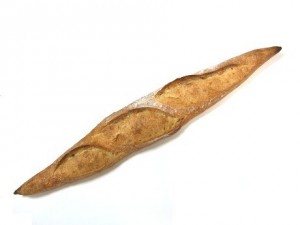 On the plane, I saw what I thought I would be expected to look like in France: a woman my age, with a waifish coiffe and a waspish waist, cigarette pants with a zipper up the shin and skinny boots to her knees. She sat across the aisle from me, pulled on a cashmere shawl, nibbled lettuce from a plastic bag, then settled into cat-like repose.
On the plane, I saw what I thought I would be expected to look like in France: a woman my age, with a waifish coiffe and a waspish waist, cigarette pants with a zipper up the shin and skinny boots to her knees. She sat across the aisle from me, pulled on a cashmere shawl, nibbled lettuce from a plastic bag, then settled into cat-like repose.
But once we arrived, she disappeared, like the cigarette smoke that also seems to be nowhere here. Instead, at the airport, we saw people all sizes and shapes, using luggage carts as scooters. Wearing head wraps. Some even sporting shorts.
Our first introduction to French culture was through bread. Steven Kaplan, our landlord and a scholar specializing in the history of bread, met us at the apartment then took us to his favorite bakery: Dominique Saibron, on rue Alesia. Sitting at a sidewalk table, we ate tartines (a baguette sliced in half, with butter and jam on the side), while he explained to us that one of the reasons the bread was good was because it was sauvagement inscrit. Wildly inscribed. It didn’t have a honeycomb-like, regularly repeated pattern, but was unpredictable, some holes large, some small, all different shapes.
I didn’t think about it at the time, but now the Alesia Baguette, with its goal of heterogeneity and surprise, seems like an apt metaphor for Paris itself. Next time I’ll leave all preconceptions of what Parisians are like—and of what I’m expected to be like—on the plane.